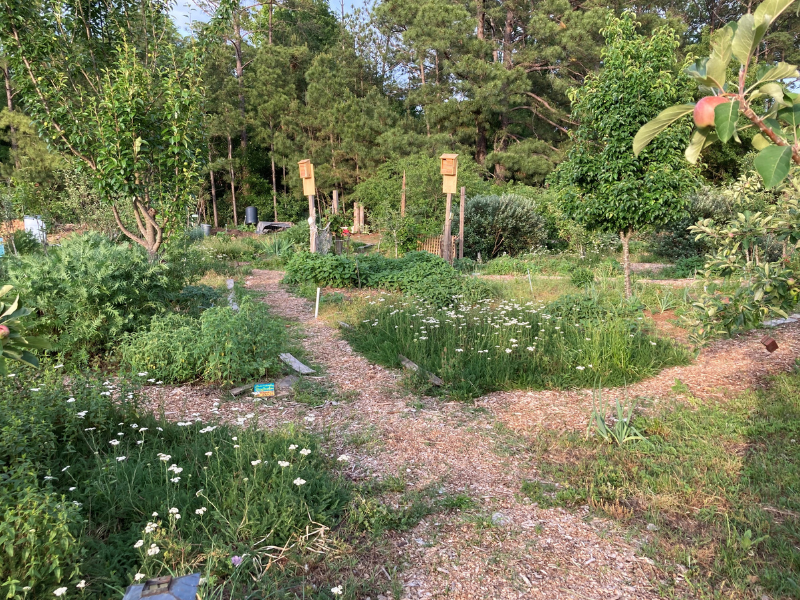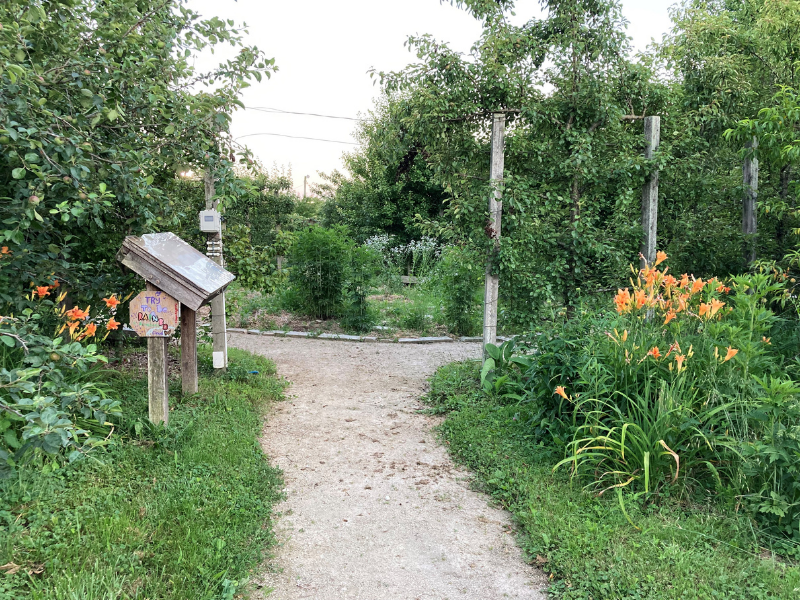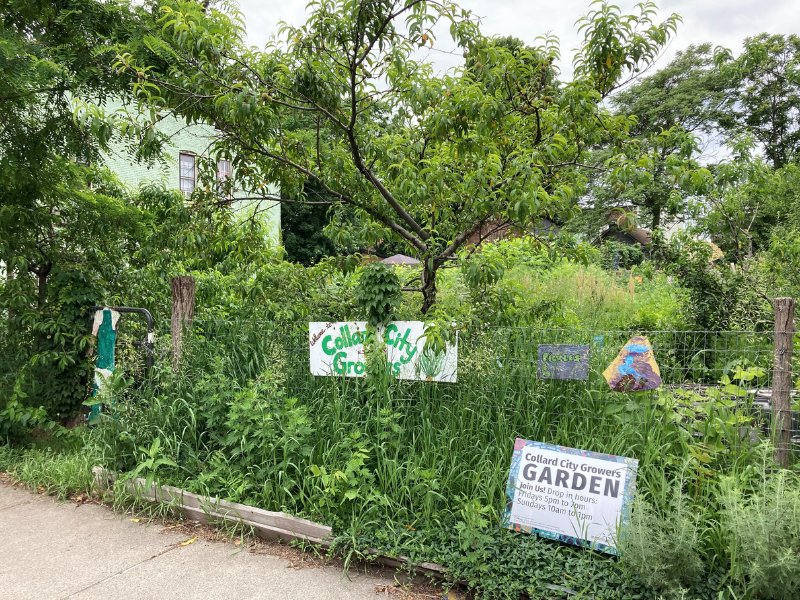A preliminary framework for better urban agroforestry
September 13, 2021 - Susan V. Fisk
Today’s cities don’t have walls for protection like ancient ones, but they are separate from less urban and rural land. Most goods that city-dwellers purchase are brought in from rural farms and manufacturers. There is an active community of urban gardeners and landscape architects who are trying to bring more of the “country” back into the city. And for good reason.

Urban landscapes combining trees and crops – urban agroforestry – can offer ecological, cultural, economic benefits and more.
Researcher John Taylor recently published a paper about methods for designing multifunctional urban agroforestry with people in mind. The paper was published in Urban Agriculture & Regional Food Systems Journal, a publication of the American Society of Agronomy and Crop Science Society of America.
“Many city landscapes have a narrow range of functions and don’t encourage interaction” says Taylor. “We aim to incorporate the human aspect into designs that include crops and trees.”
“In addition to their productive and diverse cultural functions, these spaces have the potential to infiltrate stormwater,” says Taylor. “They can also lessen the effects of urban heat islands and conserve biodiversity. The plants and soils store carbon, contribute to soil formation, and recycle urban wastes.”
Finally, by bringing crop production back into cities, urban agroforests can help close the nutrient loops between consumers and sites of food production.
Taylor and co-author Sarah Lovell wanted to develop an evidence-based approach to the design of these urban agroforests. Their preliminary framework integrates theory, principles, and practices from urban agroecology with environmental psychology and landscape architecture.

They propose fourteen guidelines to design multifunctional, culturally preferred urban agroforests. When applied, the resulting urban agroforests would be socially sustainable. They would also be equitable and promote the circular “metabolism” of the city.
“Our work isn’t comprehensive or exhaustive,” says Taylor. “Instead, we hope it engages members of relevant disciplines in an ongoing dialog on this emerging topic and stimulates future research.”
The design of multifunctional urban agroforests faces several challenges:
- Biophysical challenges – cities are warmer than their rural counterparts. The asphalt and cement of buildings and roads can increase temperatures, as well as block rainfall from getting to its natural destination – soil. Where there is unsealed or uncovered soil in cities, it is often compacted and lower quality, which affects how well it serves the environment.
- Sociocultural challenges – cities have higher property values than rural areas. Thus, the land may be expected to perform at higher levels. Urban agroforestry sites may need to be productive and economically sustainable…and beautiful, psychologically restorative, and culturally acceptable. Some sites may even be expected to be all these and provide recreational and/or educational opportunities.
Despite these challenges, cities offer opportunities for urban agroforestry, too. “Urban agroforestry systems can be woven into the urban fabric,” says Taylor. “They can provide opportunities for residents to experience the restorative properties of interacting with everyday nature. If designed properly, these sites can be an antidote to urban ‘blandscaping,’ the aesthetic, ecological, and biological ‘sameness’ common in cities in developed countries.”

Among many of the ideas proposed in the paper are:
- Connect some waste streams to the urban agroforest. Crops and trees can be watered with safe forms of wastewaster, like greywater or rainfall collected from buildings. The sites could be used as drop off sites for recycling food wastes, which can be made into compost. Compost can also rehabilitate urban soils.
- Improve the environmental psychology of cities. Open spaces can be separated by masses of vegetation. Swales (small ditches to collect precipitation) can wind through parks to collect water. Swales can also create a diverse habitat as well as provide visual interest. Small scale systems, like community gardens, have many benefits, including creating emotional bonds between gardeners and others involved.
- Make ecological processes visible by creating experiments in landscape architecture that the public can see.
Urban agroforestry—particularly in the form of edible forest gardening—is a powerful concept with popular appeal. “It can inspire diverse people to imagine urban food systems in new ways,” says Taylor.
“Cities are full of potential for creating urban agroforests at a wide range of scales,” he says. “These could be current residential lots, bland public spaces, and even vacant lots. Harnessing public enthusiasm for food forests could create a potent force for social-ecological change and transformation in the urban environment. Urban agroforests can even reduce the ecological footprint of cities.”
While the future of urban agroforestry is bright, advancing this agenda will require the collaboration of a wide range of stakeholders and experts. This will include community members, social and natural scientists, designers, and university outreach.
